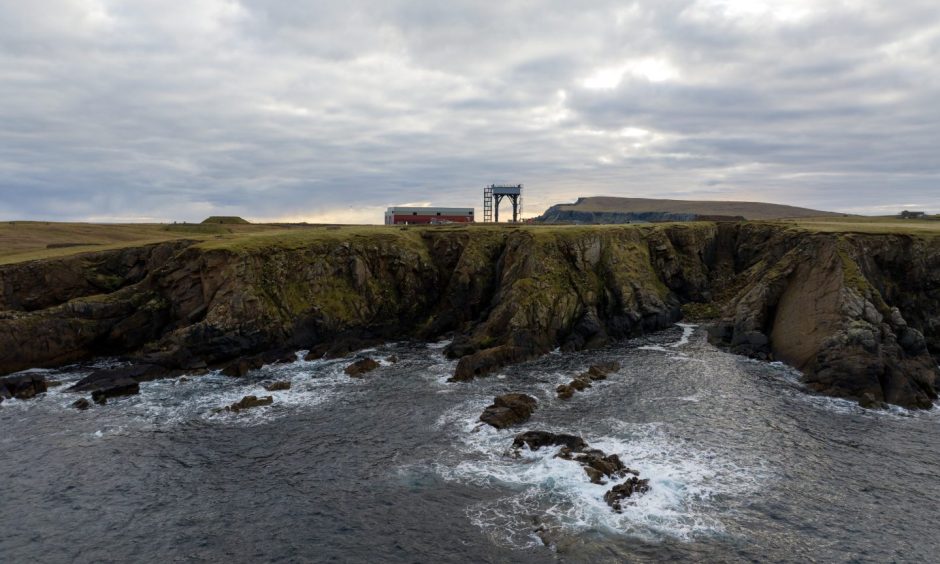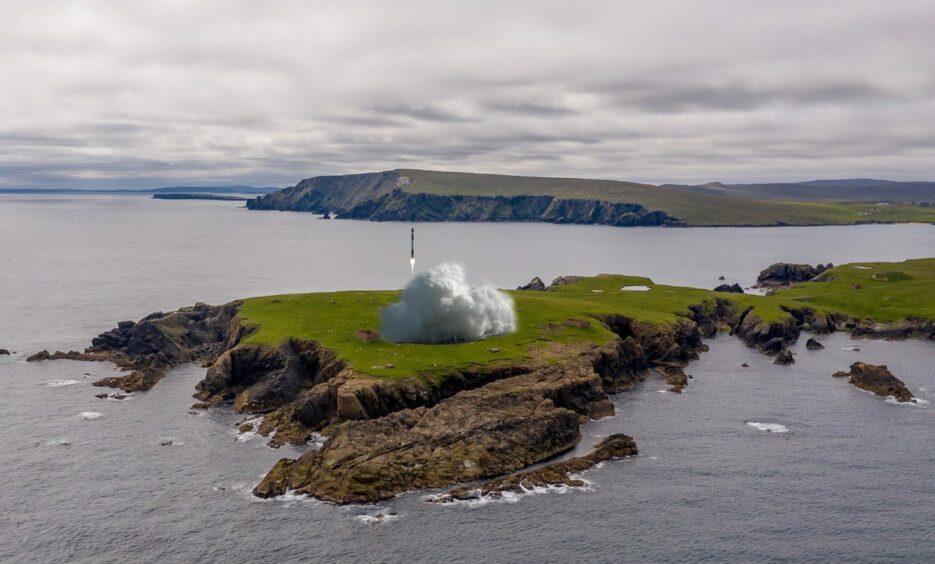
From our mobile phones to the cereal we eat in the morning, space influences our everyday lives even when we don’t realise it, says one of the leading figures behind Shetland’s new spaceport.
And while that influence can largely go unnoticed, the team at SaxaVord Space Port in Shetland think they can get people looking to the stars.
“Imagine you’re a young child growing up in Shetland – there is a space port now that they could go and work for, and do a whole variety of jobs there,” says operations director Scott Hammond.
History was made last month when the SaxaVord site, on the small island of Unst, became the UK’s first space port for vertical rocket launches.
Now, the team is confidently looking towards the first launches this summer.
It is a venture that could prove transformational for the islands with promised jobs and the potential to inspire a new generation towards space.
Estimates suggest the spaceport will directly support up to 200 jobs with another 600 throughout the rest of Scotland.
Will there be a jobs boost?
In an interview for The Stooshie – DC Thomson’s Scottish politics podcast – Mr Hammond said “everybody gets excited” when they see space in a job advert – but often assume they can’t get involved.
He is keen to dispel that idea, pointing to a “massive amount” of crossover with skills in industries such as oil and gas.
Then there are all the other roles for any growing business, like HR and accounting.
“We need people that are really get up and go and want to make this happen and are excited by what we are trying to do”, he told our podcast.
Inspiring children
It’s an exciting story in the making for Unst – the UK’s most northerly inhabited island and home to fewer than 700 people.
Locally, the spaceport wants children to see the industry playing a part in their community.
There is a well-established Space Education Working Group in Shetland which links agencies including the council and the University of the Highlands and Islands.
This group has been able to deliver opportunities from basic class visits to an astronaut job camp, and annual events to promote careers in the industry.
Mr Hammond says: “One of the schools has completely changed its syllabus around space. So when they do maths, they use space as the issue.
“They do geography, they use space. That’s to inspire those children.”
He accepts it will take time to grow the industry, but adds: “I’m convinced the opportunities for young children in Shetland and the Highlands is amazing.”
How it all began
The SaxaVord Space Port, a former RAF radar station, is co-owned by Frank and Debbie Strang.
They bought the site 15 years ago with initial plans to turn it into an eco-tourism attraction.
But a new opportunity opened up when the UK Government started to look for potential sites for vertical launches of small rockets carrying satellites.
Four other spaceports are planned across Scotland – Space Hub Sutherland in the Highlands, Spaceport 1 in the Western Isles, Prestwick Spaceport in South Ayrshire and Spaceport Machrihanish in Argyll.
But SaxaVord Space Port is the only one with the licence in place for vertical rocket launches and Mr Hammond thinks it is an ideal location, citing its high latitude, among other factors.
He said: “It all comes down to geography, maths and physics.
“You cannot fly over population centres or busy sea lanes, or busy air traffic routes.
“There is nothing between us and the arctic – the north pole.”
‘We’ve got to think in terms of Europe’
He believes Shetland’s new spaceport could lead the way across Europe.
He said: “We cannot just think in terms of Scotland and the UK. We’ve got to think in terms of Europe.
“Europe only has one vertical launch space port. It’s in South America in French Guiana. It has nowhere else to put its rockets and satellites up to space.
“Last year, America launched about 160 rockets. Europe managed three so we really need to have that access to space.
He added: “We don’t realise it but in our daily lives almost everything is affected by space. We’ve all got our mobile phones, they rely on space technology.
“If you’re eating your breakfast in the morning, a lot of the health of the crops will be determined using space technology and earth observation.”
Asked one year from now – what would he like to see happen – Mr Hammond says: “By then, we will have completed two pads. Two rocket hauls.
“Basically, I would like to have seen two minimum launches by then. Maybe one sub-orbital, that goes into space but doesn’t achieve orbit and one orbital.
“I’m confident we’re going to do that.”



Conversation